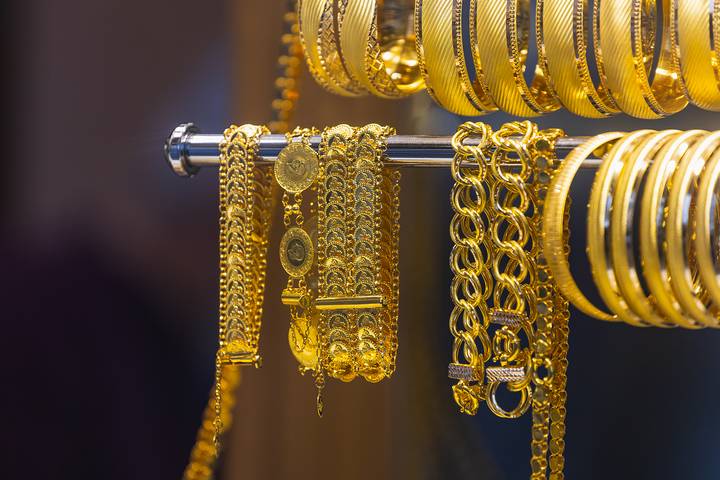Gold is used for purposes like trading and commerce, coinage, making religious artifacts, and all manner of jewellery. In its purest form, gold is a bright, dense, soft and slightly reddish-yellow malleable metal, a uniqueness that originally attracted people to it. It has low reactivity to acids and other elements, making it a perfect choice for day-to-day jewellery in particular.
Pure gold is too malleable for use by itself. To increase its strength, it’s commonly combined with other metal alloys. In most cases, this results in a change in its appearance, especially colour-wise. The most common colours are white, yellow, rose, and green, but there are several others as well.
Here are eight different types of gold and their characteristics:
Type #1: Green Gold
 Green gold is also known as electrum. It’s usually mixed with gold, silver, and in some cases, copper. Silver is responsible for the greenish colouring on this gold alloy.
Green gold is also known as electrum. It’s usually mixed with gold, silver, and in some cases, copper. Silver is responsible for the greenish colouring on this gold alloy.
Green gold was used by ancient people in 860 BC. It was known as electrum. This naturally occurring gold and silver alloy is more greenish-yellow than green.
The green can also be achieved by adding cadmium to a gold alloy. However, this practice is not common since it is highly toxic. To get a dark green alloy, you need 4% cadmium, 6% copper, 15% silver, and 75% gold.
Type #2: Rose Gold
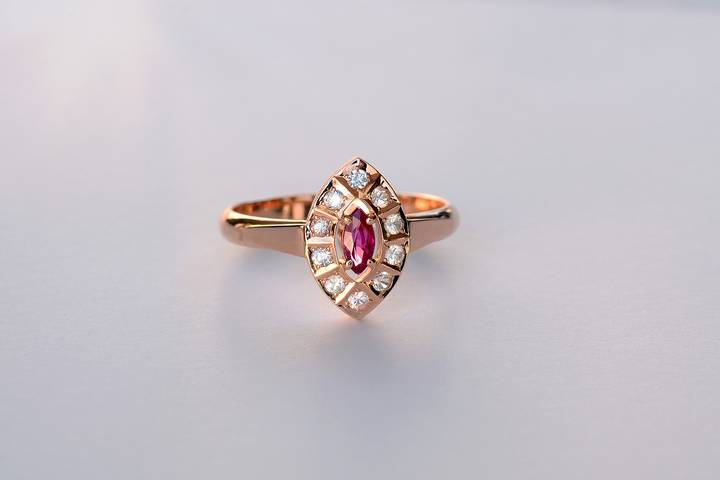 Rose gold is a type of gold that is also known as red gold or pink gold. You can get it by mixing pure gold with copper that has a red tinge to it. Depending on the proportions used to blend the copper with the gold, shades of rose gold can vary greatly. The higher the copper content, the redder the final colour.
Rose gold is a type of gold that is also known as red gold or pink gold. You can get it by mixing pure gold with copper that has a red tinge to it. Depending on the proportions used to blend the copper with the gold, shades of rose gold can vary greatly. The higher the copper content, the redder the final colour.
In jewellery, a combination of 75% gold and 25% copper is common. It’s impossible to achieve pure white or rose gold. The best option is to combine it with other metals to achieve the desired colour.
Rose gold is the most affordable type of gold since it uses inexpensive copper for colouring. The copper content makes it more durable compared to the yellow or white gold.
Type #3: Yellow Gold
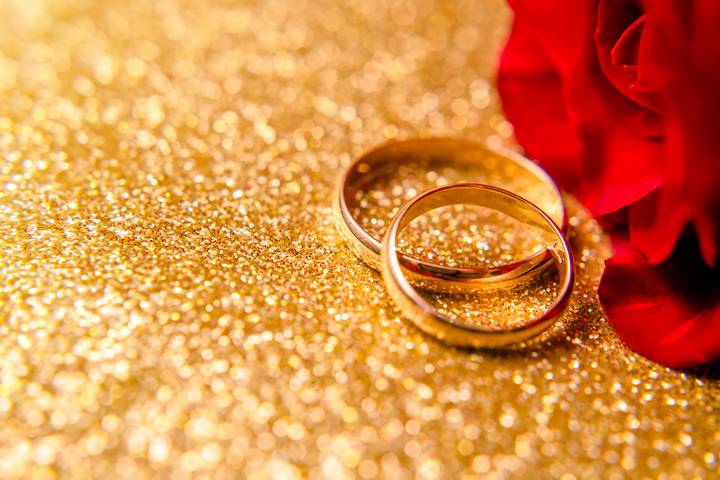 People most commonly refer to yellow gold when talking about gold jewellery. Since gold was discovered in its natural state, yellow gold has been the most common type throughout history.
People most commonly refer to yellow gold when talking about gold jewellery. Since gold was discovered in its natural state, yellow gold has been the most common type throughout history.
Ancient items such as religious artifacts featured yellow gold due to the limited methods of alloying it. It was also readily available. Besides, this is the purest naturally occurring gold.
For jewellery, pure gold is combined with metals such as zinc, silver, and copper to make an alloy. Common alloys for yellow gold feature 75% gold, 15% copper, and 12.5% silver for 18k yellow gold. The composition for the darker 18k yellow gold is 75% gold, 15% copper, and 10% silver.
Type #4: Black Gold
 Black gold is also a common jewellery choice. There are different methods used to achieve black-coloured gold. One is via oxidization, which involves sulphur oxygen-based compounds. The other uses controlled oxidization of gold-containing cobalt or chromium.
Black gold is also a common jewellery choice. There are different methods used to achieve black-coloured gold. One is via oxidization, which involves sulphur oxygen-based compounds. The other uses controlled oxidization of gold-containing cobalt or chromium.
Cobalt containing alloys form a black oxide layer that makes the gold black. Through treatment with potassium sulphide, colours that range from black to brown can be achieved on copper-rich alloys. You can use iron and titanium to achieve the same effect.
Type #5: Grey Gold
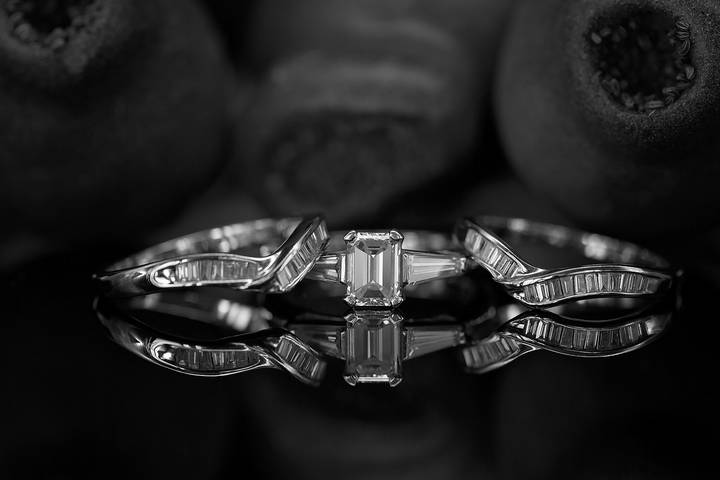 Made by combining gold and palladium, this type of gold is a cheaper alternative and does not use palladium. It’s made by adding copper, iron, manganese, and silver in specific ratios. The most common composition for this alloy is 75% pure gold, 17% iron, and 8% copper.
Made by combining gold and palladium, this type of gold is a cheaper alternative and does not use palladium. It’s made by adding copper, iron, manganese, and silver in specific ratios. The most common composition for this alloy is 75% pure gold, 17% iron, and 8% copper.
Type #6: Blue Gold
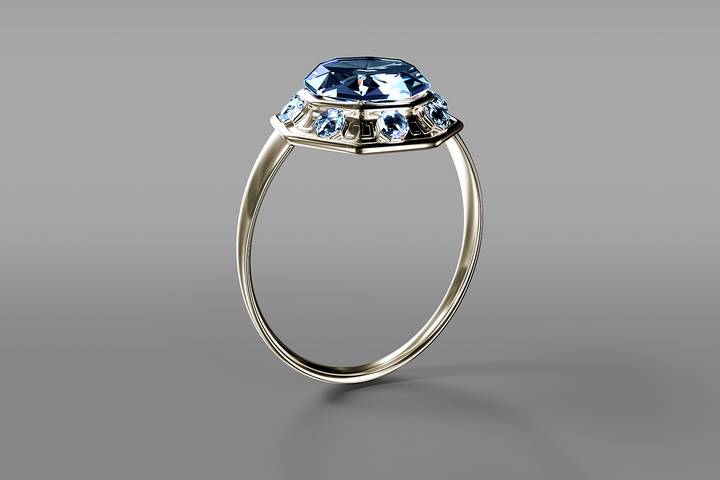 To get blue gold, combine pure gold with either indium or gallium. Gold-indium alloys contain 46% gold and 54% indium, which results in an intermetallic compound with a rich-blue colour.
To get blue gold, combine pure gold with either indium or gallium. Gold-indium alloys contain 46% gold and 54% indium, which results in an intermetallic compound with a rich-blue colour.
For gold-gallium alloys, the gold adopts a slightly bluish hue. You can get a 20-23K rich-blue coloured gold by alloying with rhodium and ruthenium.
Type #7: White gold
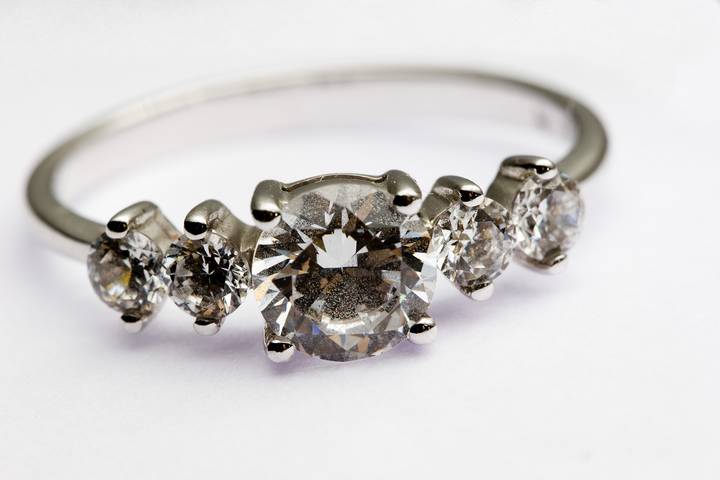 Another popular choice for jewellery, white gold is made by combining pure gold with alloy metals, which have a silvery-white colour, nickel, and palladium. The properties of white gold vary depending on the proportions of the alloys used.
Another popular choice for jewellery, white gold is made by combining pure gold with alloy metals, which have a silvery-white colour, nickel, and palladium. The properties of white gold vary depending on the proportions of the alloys used.
A gold-nickel alloy is strong and hard, making it great for rings and pins. Gold-palladium are pliable and soft. They are commonly used to set white gold gemstone. If nickel is used, some white gold alloys cause an allergic reaction if worn for long periods. White gold is additionally coated in rhodium for strength and durability. It has a lustrous white surface sheen.
Type #8: Purple Gold
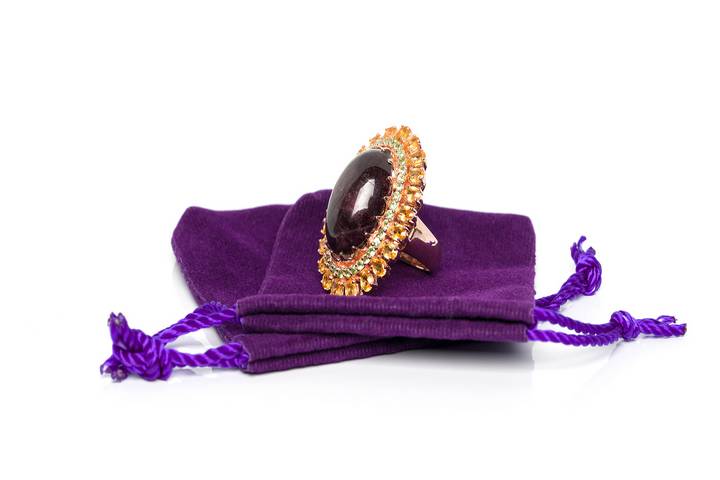 Purple gold is also known as violet or amethyst gold. Compared to other types, it is more brittle as it features an intermetallic compound. Handle it with care since a sharp blow may break it. Mostly used in conventional jewellery as a gem rather than by itself, purple gold combines pure gold with aluminum. The right composition is 75% pure gold and 25% pure aluminum.
Purple gold is also known as violet or amethyst gold. Compared to other types, it is more brittle as it features an intermetallic compound. Handle it with care since a sharp blow may break it. Mostly used in conventional jewellery as a gem rather than by itself, purple gold combines pure gold with aluminum. The right composition is 75% pure gold and 25% pure aluminum.
The choice to make when buying gold is in its colour. You can either choose based on your personal preference or on the colour that best complements your skin tone and style.

